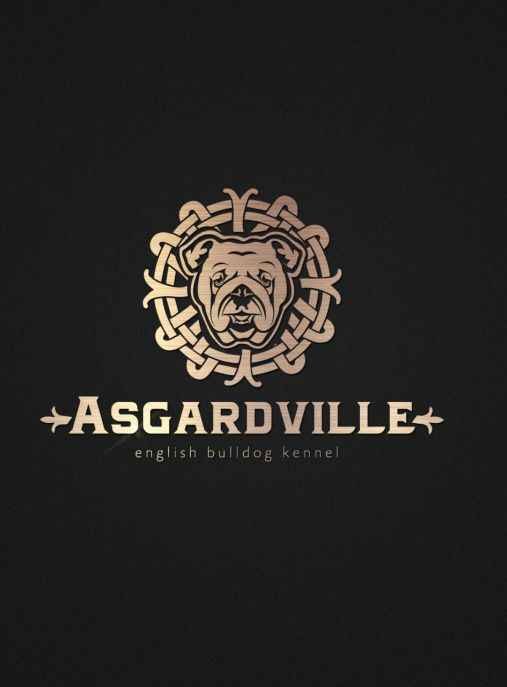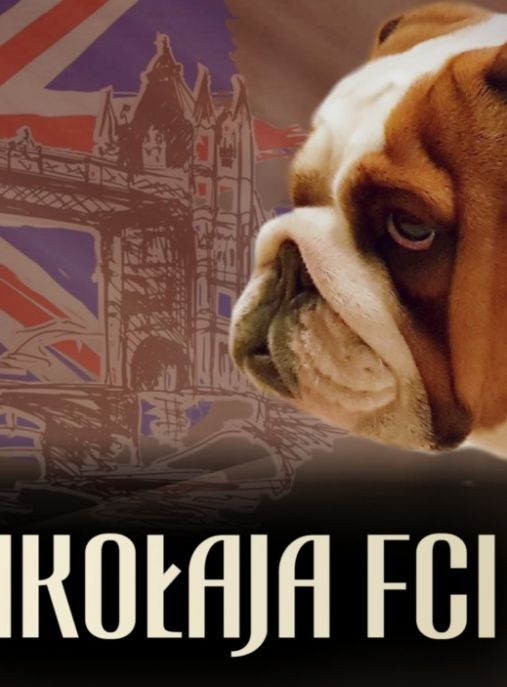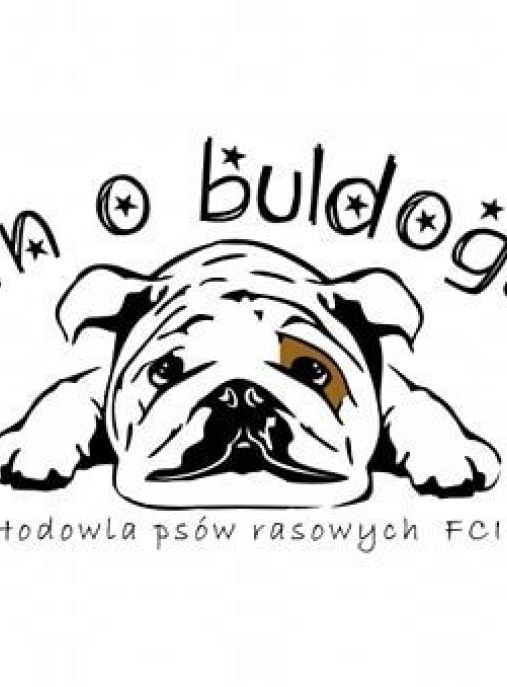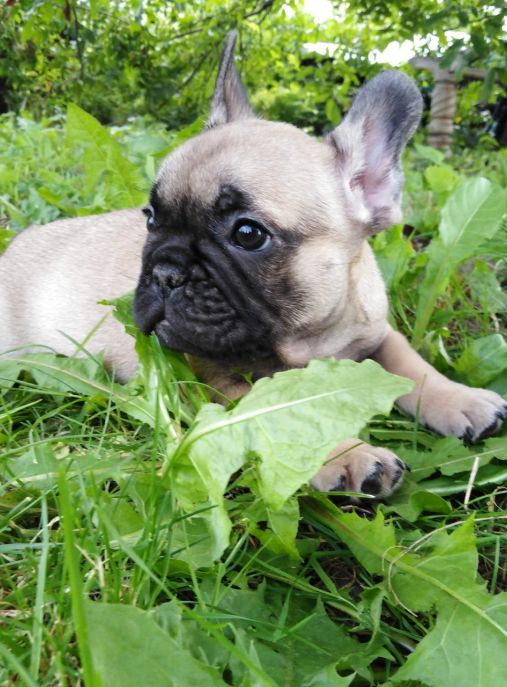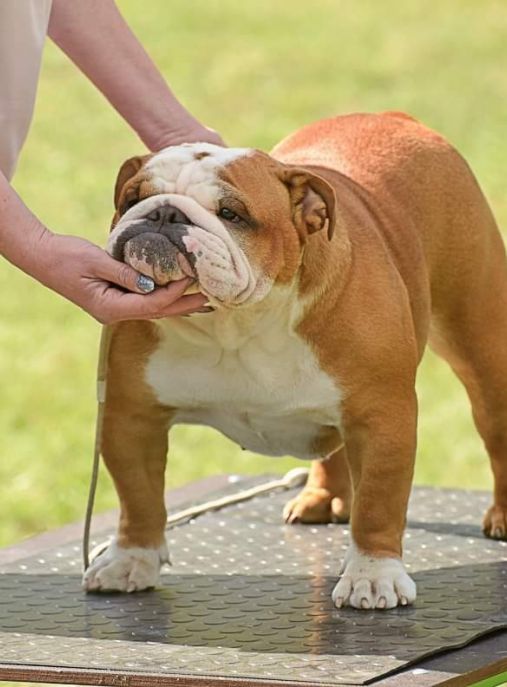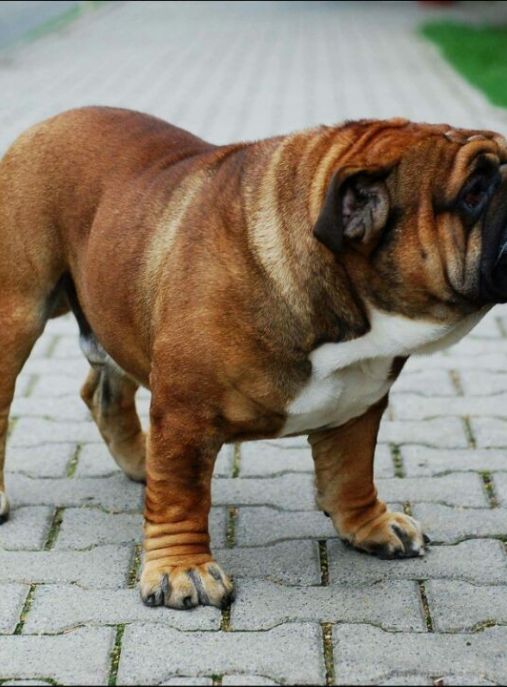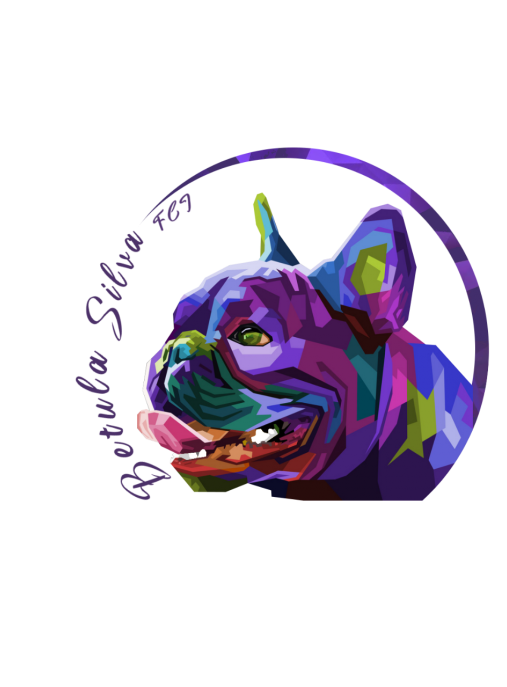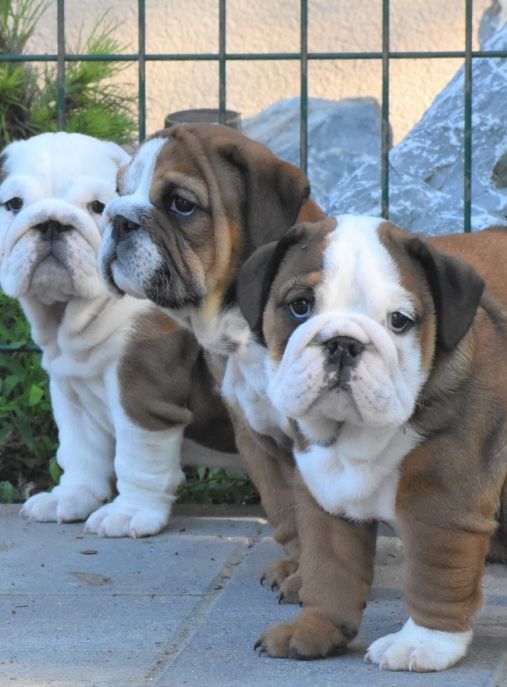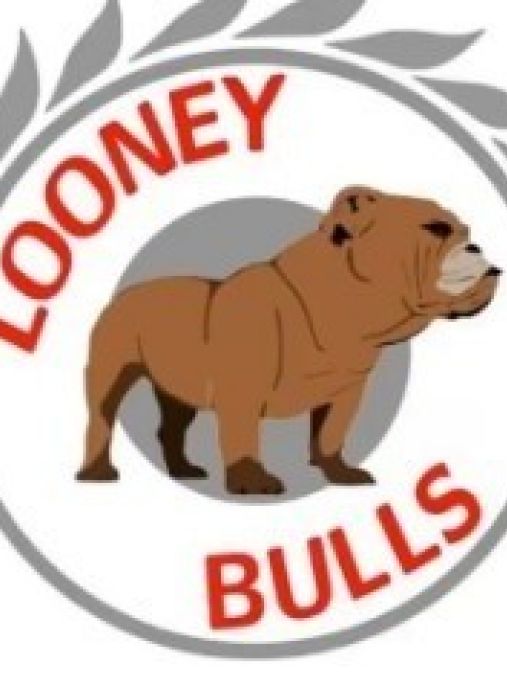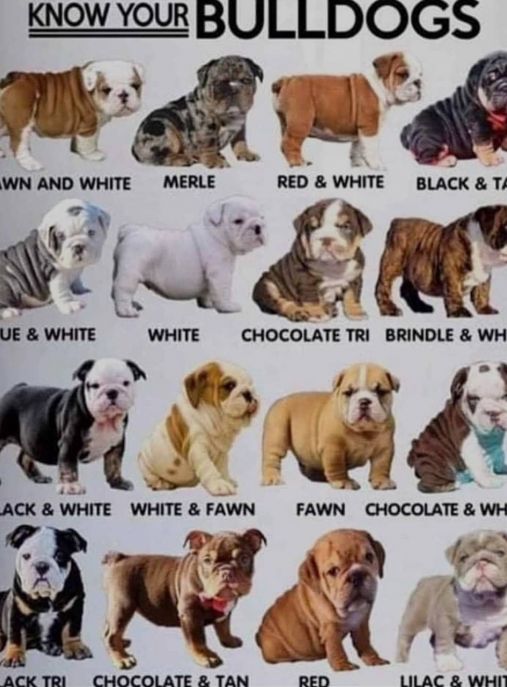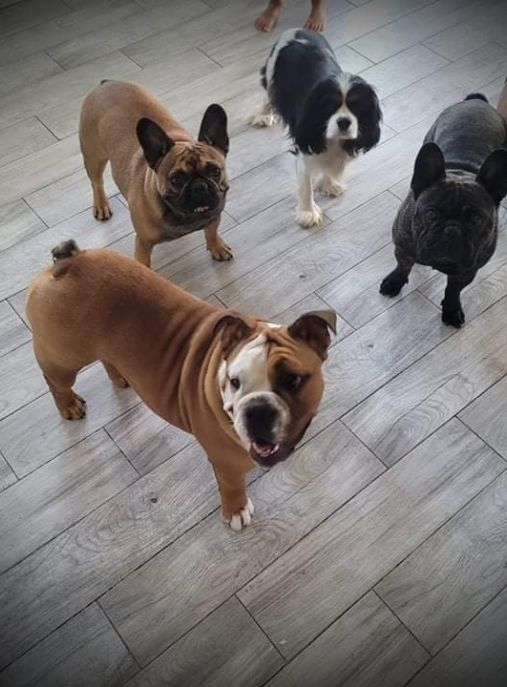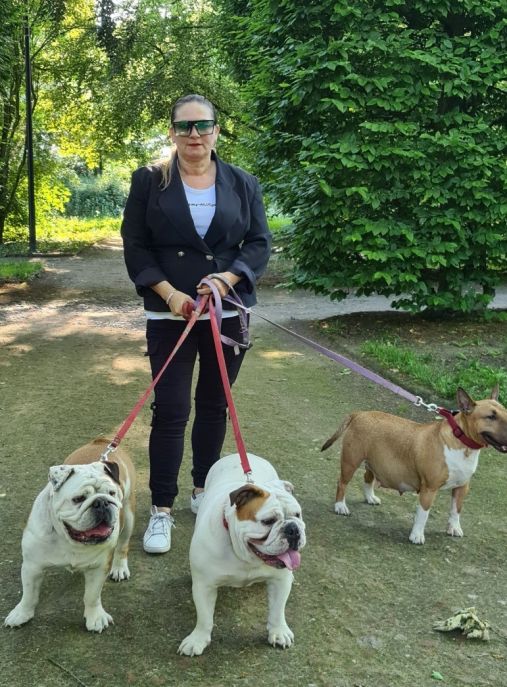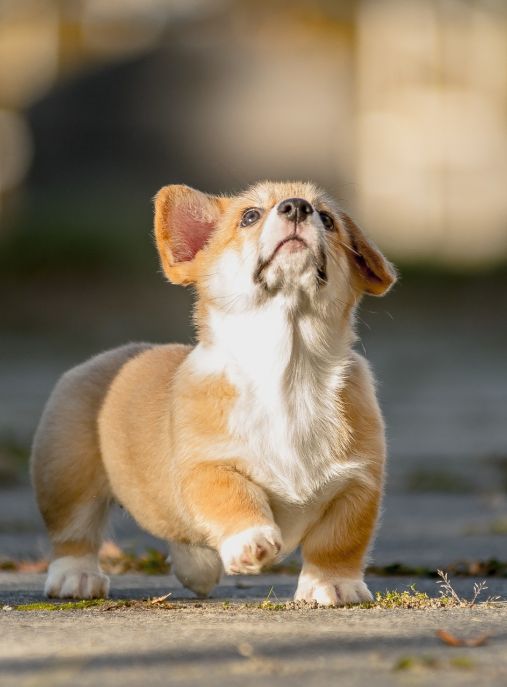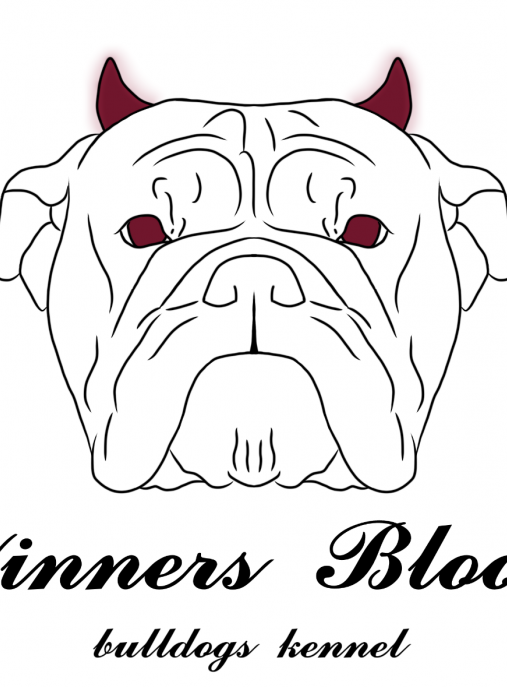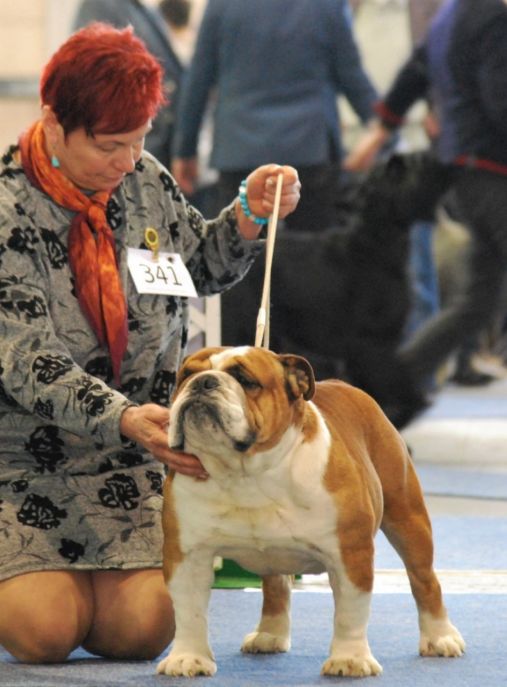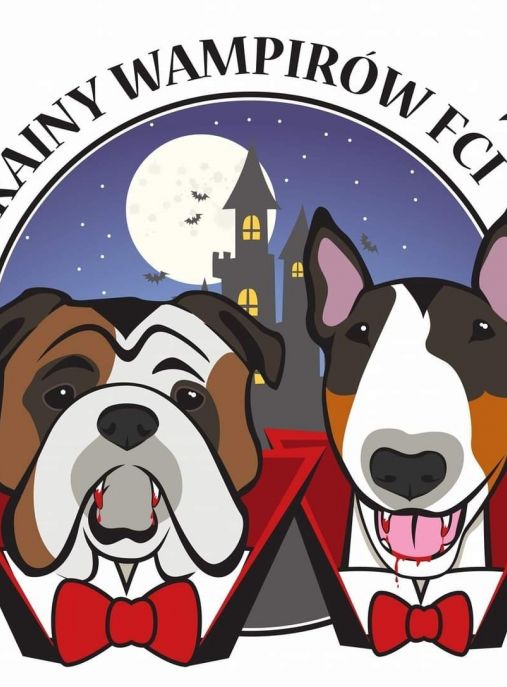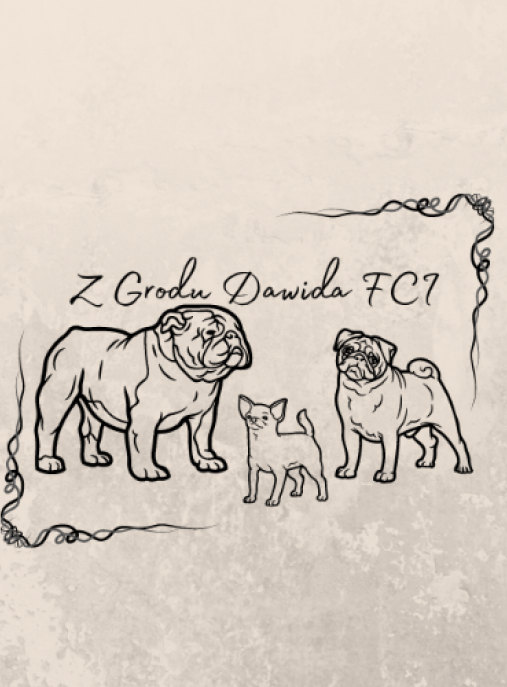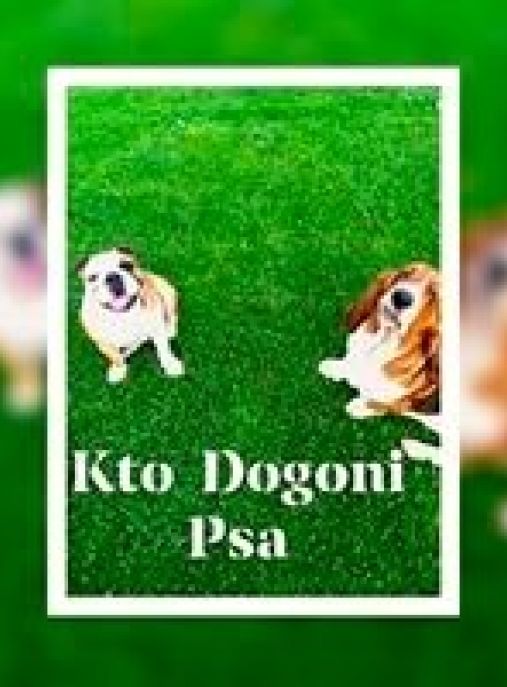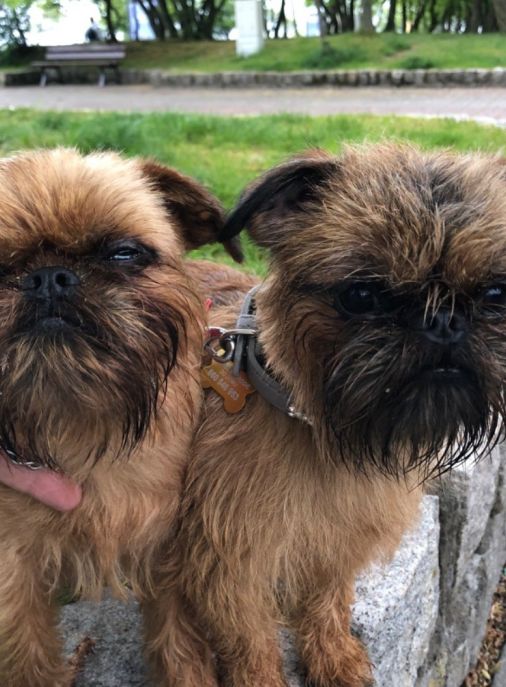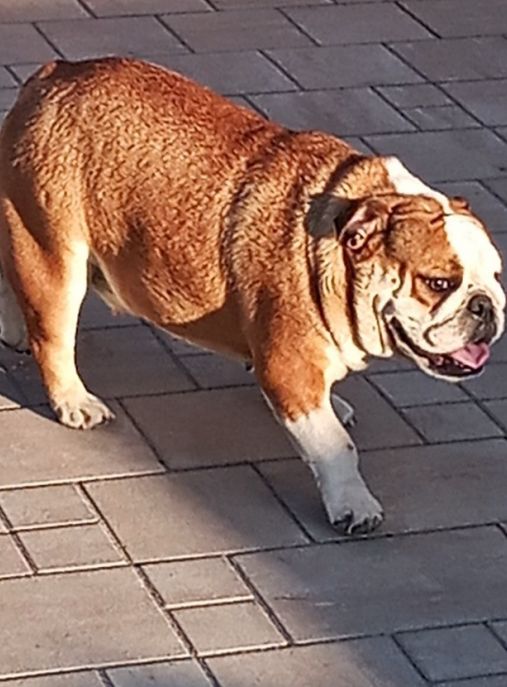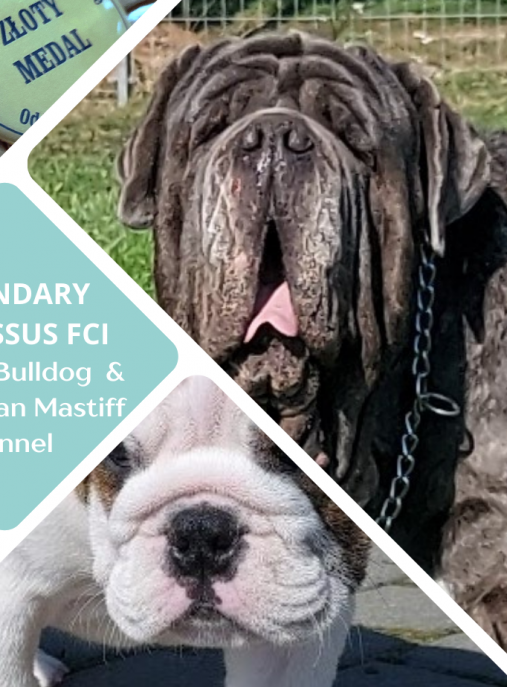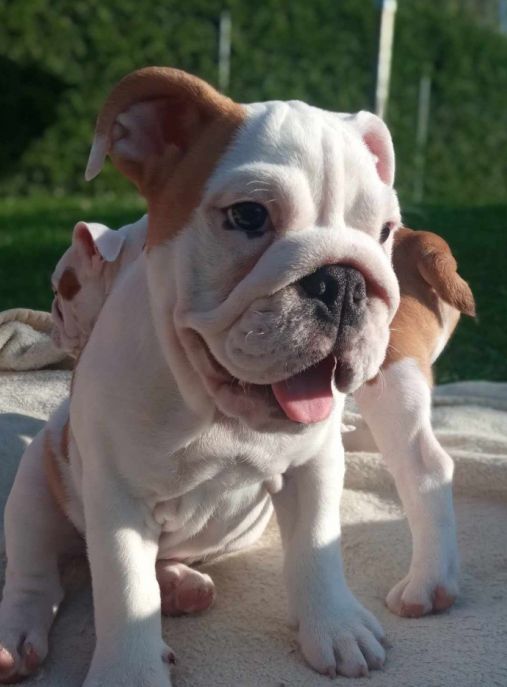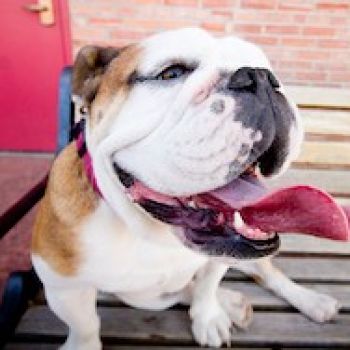The impressive pedigree of the Bulldog, also called the English Bulldog or British Bulldog, goes back to ancient times, when there is mention of molosses, fighting dogs bred by the Greek tribe of the same name. It was brought to England by sailors. As the name suggests, the bulldog was made to attack bulls. This 'attraction' began in 1204 when Lord Stamford of Lincolnshire was greatly amused by the sight of several butcher's dogs abusing a bull. Then he decided to create the first arena for such fights. People of all classes came to the fights with high bets. The dogs fought not only the bulls, but also each other.
The fighting dog was stocky, short-legged and stable. It also had tremendous strength in its neck and jaws. The short nose and the forward lower jaw allowed for a firm grip on the victim and free breathing at the same time. As for character, it was very aggressive. Fortunately, this trait has not survived in English Bulldogs to the present day. When bullfighting was banned in 1853, bulldogs were in danger of becoming extinct. One of the breeders, Bill George, saved the breed from oblivion and initiated the creation of a bulldog lovers club. The English Bulldog is the national dog of the British.
- Life Expactancy: 8-10 years
- Height at the withers: 35 - 38 cm
- Male weight: 25 kg
- Female weight: 23 kg
The Bulldog is a short-legged, strong dog with a well-developed and compact body. This breed is alert, bold and courageous. Although the bulldog looks formidable, it is actually quite a gentle dog. It loves children and is a real pet. Due to its tolerance, patience and gentleness, the bulldog will be the perfect nanny, as long as there is an adult nearby, watching over the proper behavior of children towards their four-legged friend. It is also a lively and spontaneous dog.
The Bulldog has a sense of humor and intelligence. It is a friendly family dog with great charm.
At home, it behaves calmly and does not make noise. It is a sensitive and affectionate dog which enjoys the company of people. Although it is usually phlegmatic, there are brief moments of hyperactivity. In training, it is an easy-to-train dog. It is especially sensitive to human voice. It will respond to a friendly but firm request. Under no circumstances should it be taken severely or allowed to walko over you.
The behavior of the breeder towards this breed should be consistent. The intercourse of the English Bulldog with other animals and dogs is usually conflict-free. In relation to strangers, it can be both a bit suspicious and very open and eager to make friends. The English Bulldog is a good companion for people who are not very active, as it does not require long walks. Most of the time it will be happy to spend in the garden or at home, as long as the family is nearby.
During shedding, the dead and loose hair of the Bulldog is easily removed with a rubber brush and then with a towel. This should be done almost every day. Systematically clean the folds on the mouth, using special agents dedicated to this breed.
The English Bulldog likes to lie on a soft surface in a dry and draft-free place. It is a typical domestic dog.
English Bulldogs are extremely uncomfortable in heat so provide them with a cool place to rest in summer. On hot days, a walk is recommended in the early morning and late afternoon.
The colour of bulldog's coat is:
- brindle
- red in different shades
- fawn
Spotted colour is when each of these patch colors is on a white background. Black, black and tan or flesh color is undesirable. The coat is fine, short and smooth. It's not rough.
Due to its anatomy, this dog gets tired of long walks so you should not force it too much. As a puppy, the English Bulldog has no restraint in exercise. It can play and run even when exhausted so be vigilant and give your dog a chance to rest so that its bones, muscles and joints can regenerate and shape properly.
Bulldogs suffer from anatomical defects of the eyelids, patellar prolapse and dysplasia. Despite the fact that they tolerate frost quite well, staying in the cold for a long time can lead to a cold or inflammation of the roots.
Due to their body structure, English bulldogs have problems with the spine, chest, narrowed trachea or excessively long soft palate. A big disadvantage, which, unfortunately, is reflected in its daily functioning is overgrowth, i.e. an excessively shortened muzzle and narrow nostrils that make breathing difficult.
English Bulldogs are not picky dogs and their appetite is excellent. However, due to their anatomy and the tendency to tire during exercise, they should not be overweight. Each unnecessary kilogram strains the metabolism and has a negative impact on the dog's movement.
The Bulldog should be fed a high-quality, well-balanced food with good quality protein and no grains added.

